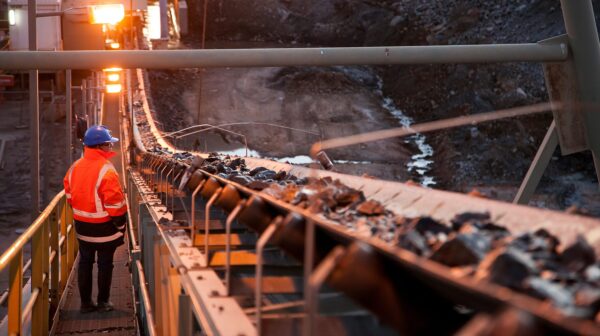Canada’s mining disclosure regime is on the brink of major reform. On June 12, 2025, the Canadian Securities Administrators (“CSA“) released a proposal to repeal and replace National Instrument 43-101 Standards of Disclosure for Mineral Projects (“NI 43-101“), Form 43-101F1 Technical Report (“43-101F1“) and the Companion Policy 43-101CP to NI 43-101 (the “Companion Policy“). This marks the most significant update to mining disclosure standards in over two decades.
The proposed changes aim to modernize and clarify existing requirements, better align Canadian standards with the global reporting framework and reduce regulatory burden, while preserving investor protections.
Specifically, the proposed amendments seek to:
- remove or replace certain definitions that have become outdated;
- modernize and streamline certain requirements to reflect current industry practice;
- remove certain requirements that have become outdated;
- provide clarification and guidance on certain definitions and requirements; and
- make other minor drafting changes to clarify disclosure requirements.
The CSA is currently soliciting comments on the proposed amendments, with the public comment period ending on October 10, 2025.
The following is a summary of the CSA’s proposed amendments to Canada’s existing mining disclosure regime.
Overview of proposed amendments
Changes to terms and definitions
- “Mineral Project”:Currently, NI 43-101, 43-101F1 and the Companion Policy use the terms “mineral project,” “project,” “mineral property” and “property” interchangeably. The CSA’s proposed amendments seek to streamline such terminology by replacing such terms with “mineral project.” All current references to diamonds, base metals, precious metals and industrial metals in the current definition of “mineral project” will also be removed.
- “Early-stage Exploration Property” and “Advanced Property”: The CSA’s proposed amendments will remove the definitions “early-stage exploration property” and “advanced property” currently used in NI 43-101.
- “Qualified Person”: The CSA’s proposed amendments will clarify certain requirements in respect of this definition such as:
- remove the education requirement as it is covered by professional licencing criteria;
- clarify that an individual’s experience in the minerals industry must be gained after registration as a professional geologist or engineer; and
- clarify the meaning of experience relevant to the subject matter of the mineral project.
- Alignment with Global Standards: By adopting the Canadian Institute of Mining, Metallurgy, and Petroleum’s Definition Standards for Mineral Resources and Reserves, the CSA’s proposed amendments are intended to align Canada’s mining disclosure requirements with the Committee for Mineral Reserves International Reporting Standards (the international organization representing more than 85% of global jurisdictions with mineral project reporting standards). Such harmonization efforts will provide much needed flexibility for issuers as they will no longer be required to rely on foreign reporting codes currently used in technical report disclosures.
Changes to disclosure requirements
- Royalty Issuer Technical Reports: The CSA’s proposed amendments will remove the current requirement for a royalty-only issuer to file a technical report.
- Environmental and Social Issues: The CSA’s proposed amendments will incorporate enhanced terms and definitions, including “rightsholders” and replacing outdated terms such “local” and “social and community impact.” The proposed amendments will also require the disclosure of the dates and sources of any environmental, permitting and social reporting disclosure.
- Indigenous Peoples, Rightsholders and Communities: The CSA’s proposed amendments will require disclosure in the technical report of any permits, agreements or negotiations with Indigenous Peoples, rightsholders or communities with respect to the mineral project.
- Current Personal Inspection Requirements: The CSA’s proposed amendments will enhance the current disclosure requirements by requiring a new standalone disclosure requirement with respect to the current personal inspection by each “qualified person” and it is proposed that a deferral of the current personal inspection due to seasonal weather conditions will not longer be permitted. Rather, at least one “qualified person” must conduct a current personal inspection prior to the filing of a technical report.
- Mineral Resource Disclosure: The CSA’s proposed amendments will require:
- information about how reasonable prospects for eventual economic extraction were determined;
- enhanced disclosure around mineral resource classification;
- disclosure of the issues attributable to ownership interest in any jointly-held mineral resource; and
- project-specific risk disclosure related to mineral resource estimates.
- Adjacent Property Disclosure: The CSA’s proposed amendments will require that an issuer does not focus disclosure in its technical report about neighbouring mineralization. While an issuer may still include such disclosure, it must include cautionary statements stating that such information is not necessarily indicative of mineralization on the issuer’s mineral project.
- Data Verification: The CSA’s proposed amendments will require “qualified persons” to make specific disclosures with respect to the data verification performed by “qualified persons” for each item of the technical report.
- Disclaimers: The CSA’s proposed amendments will require that an issuer’s disclosure (including a technical report) not include any disclaimers regarding scientific or technical information.
- Written Disclosure and Material Mineral Projects: The CSA’s proposed amendments will provide that requirements for written disclosure (including data verification, exploration information, and mineral resources and mineral reserves) must apply to both material and non-material mineral projects.
- Relevant Scientific and Technical Information: The CSA’s proposed amendments will replace the phrase “mineral scientific and technical information” with “relevant scientific and technical information” for the purposes of a technical report. Effectively, this amendment requires a “qualified person” to determine the relevance of scientific and technical disclosure, as opposed to its materiality.
Conclusion
This article provides a general overview of the CSA’s proposed amendments to Canada’s existing mining disclosure regime. For more information, please visit CSA Notice and Request for Comment – Proposed Repeal and Replacement of National Instrument 43-101 Standards of Disclosure for Mineral Projects or contact a member of Miller Thomson’s Mining Group which has vast experience dealing with mining issuers of all sizes and stages with operations in Canada and abroad.





